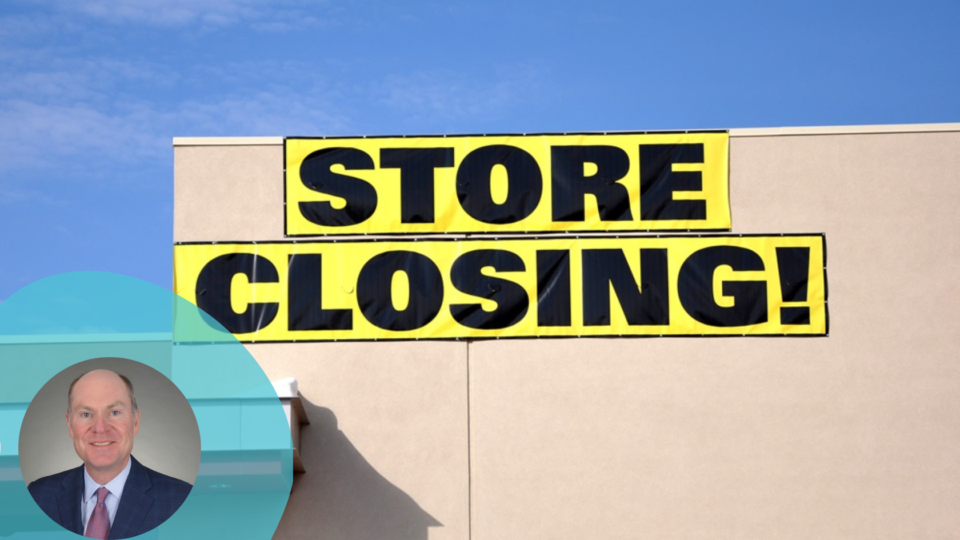In the first quarter each year, announcements of store closings often fuel speculation about the state of physical retail and the strength of the industry.
In fact, the marketplaces industry, and brick-and-mortar retail specifically, is healthy, with underlying metrics demonstrating that demand for space continues to outpace supply. In the competition for consumer dollars, stores remain a crucial part of a successful omnichannel strategy – and there is significant opportunity in the current market for retailers looking to open stores and developers looking to reimagine spaces in fresh ways.
Let’s start by looking at the landscape. It’s true that many stores are expected to close this year, but this reflects natural churn in the industry, not a new trend. Many of these closures are long-planned, and most are independent of shifts in consumer behavior or broad-based economic pressures.
Industry metrics paint a more accurate picture: Demand for physical space is at all-time highs. The retail vacancy rate was 4.1% in 2024, among the lowest in decades, and the vast majority of retail sales occur in physical stores.
Advertisement
Limited new development also constrains available retail space. Amid high interest rates and increasing construction costs, very little new space has come online to meet demand from retailers looking to open stores. As the Federal Reserve has indicated they intend to hold off on further rate cuts, inflation remains sticky and tariffs threaten to increase construction costs further, it’s highly unlikely that a significant amount of new construction will begin in the next 12-18 months. Even if the development climate improves, it takes years for that real estate to be available to retailers.
One thing is clear: Retailers can’t afford to back away from physical stores. ICSC’s landmark series of Halo Effect reports found that opening physical stores offers a clear benefit even to a retailer’s online sales: After opening a store in a given trade area, retailers saw online sales increase 6.9% in that trade area. “Emerging” retailers saw even greater gains, of 13.9%. When retailers closed stores, however, online sales in a given area decreased by 11.5%, with some categories including home (32.2%) and department stores (26.1%) seeing even greater declines.
Against this backdrop, what can retailers and property owners do to reinvigorate communities, connect with consumers and refresh their physical footprint to drive sales? First, let’s remember that a visit to a store is an experience in itself. Retailers also can employ new, creative strategies that make the most of the available physical space. Macy’s and Ikea, for example, have successfully experimented with smaller-format stores; CVS recently announced that it will open at least a dozen new smaller-format locations in the coming years. Store-within-store concepts, pop-ups and other changes to existing space also offer promise, allowing retailers and retail landlords alike new opportunities to provide the tenant mix, services and experiences that modern consumers crave.
Other property owners have invested in more comprehensive overhauls of their physical space. Mall redevelopment has taken hold in the past few years as developers repurpose shopping centers for mixed-use communities combining residential, retail, and commercial uses. Many include medical facilities, dining, sports and athletics offerings and entertainment space as well.
AvalonBay Communities, which owns 15 communities in mixed-use districts, recently opened Avalon Alderwood Place inside of a suburban Seattle mall, repurposing a former department store into a six-story apartment complex. This entrepreneurial spirit and investment in reimagining physical space is a hallmark of the retail real estate landscape – one we expect to continue well beyond 2025.
While some retailers may close stores in 2025, this can be a win for other retailers and developers alike, with new players looking to expand their physical footprint and harness the value of physical space. Those that take advantage of brick-and-mortar benefit from the “Halo Effect” – and the chance to build lasting connections with consumers and communities for years to come.
Tom McGee is the President and CEO of ICSC, the preeminent international membership organization serving the commercial real estate and retail real estate industries. Prior to joining ICSC, he spent 26 years with Deloitte and served as Vice Chairman, along with holding other global and U.S. leadership roles, including Deputy CEO, National Managing Partner of M&A Services, and Global Chief of Staff. McGee is currently a Board Member of Farmers Insurance Exchange Subsidiaries and serves on the Loyola Marymount University Board of Trustees. He is active in numerous other business and community organizations, including serving as a member of the U.S. Chamber of Commerce Committee of 100. He is the former Chairman of Covenant House International, the largest privately funded charitable organization supporting homeless youth in the Americas.






